|
|
|
| Missing In Action (MIA) | Prisoners Of War (POW) | Unexploded Ordnance (UXO) |
| Chronology | Locations | Aircraft | Ships | Submit Info | How You Can Help | Donate |
|
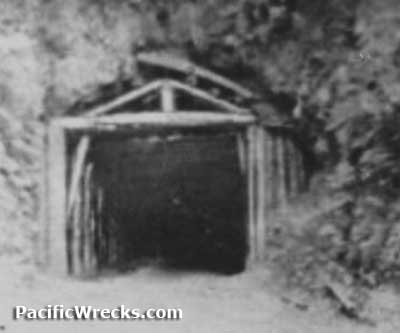 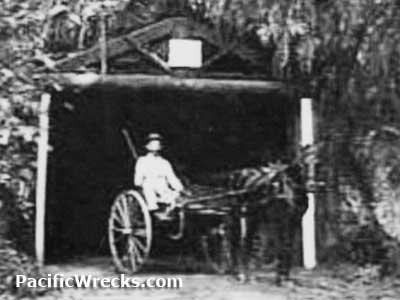 German c1910  USAAF November 1943 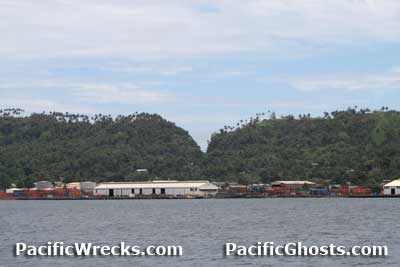 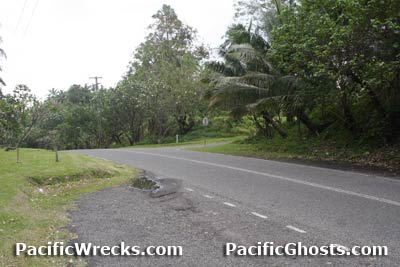 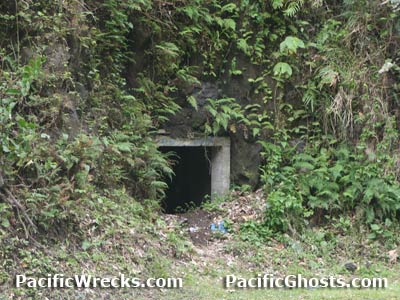 Justin Taylan 2006 |
Location Tunnel Hill (Tunnel Hill Road) is located on the Gazelle Peninsula at the northeastern tip of New Britain. The road spans from Malaguna Road at the western edge of Rabaul to the northwest through the ridge and connects to the north coast road at Tanoura bordering Talili Bay. Tunnel Hill Road connects to Observatory Ridge (Volcano Observatory). During the German administration known as "Ratavul Tunnel" or "Ratavul Pass Road". Also known as "Tunnel Hill" or "Tunnel Hill Road". Also called "Tanoura Pass" for nearby Tanoura. Between 1884 until September 1914 part of Deutsch Neu Guinea (German New Guinea). Prewar and during the Pacific War part of the New Britain District in the Territory of New Guinea. Today located in East New Britain Province of Papua New Guinea (PNG). Construction Built during the German administration as a tunnel known as "Ratavul Tunnel" or "Ratavul Pass Road". Originally, the tunnel was dug by hand and shored up with timbers to form the tunnel. After an earthquake, the tunnel collapsed. Later, it was dug out again and expanded into a road cut known as "Tunnel Hill" or "Tunnel Hill Road". Wartime History During the Japanese occupation of the area, laborers dug tunnels into the sides of Tunnel Hill Road to shelter troops and equipment. During early March 1944, one tunnel was used to detain Allied Prisoners Of War (POW) with the Japanese Army 6th Kempei Tai (Military Police) in the adjacent tunnel. Tunnel Hill POW Camp (Cave Camp) This location is a man made tunnel that is a hand dug single shaft roughly 5' wide, 6' tall and 25' deep wide dug into the eastern side of Observatory Road off Tunnel Hill Road. On March 2, 1944 due to the heavy bombing of Rabaul, the Allied Prisoners Of War (POWs) from the Rabaul Prisoner Compound (Rabaul POW Prison) were trucked to this location arriving around 7:15pm and detained in a single tunnel guarded by 6th Kempeitai (6th Kempei-Tai). This location became known as "Tunnel Hill POW Camp" or "Cave Camp" or "Tunnel Hill Prrisoner Of War Camp Cave". The single entrance was secured with a door made of coconut logs with guards outside. Inside, the prisoners were detained in cramp conditions with a single toilet bucket and provided little food. The tunnel nearby was used by the guards. Talili Bay Massacre / Tunnel Hill Massacre / Tunnel Hill Incident On March 4, 1944 and March 5, 1944, thirty-one Allied prisoners were removed from Tunnel Hill POW Camp and never seen again. These executions became known as the Tunnel Hill Massacre, Tunnel Hill Incident or Talili Bay Massacre. All three names refer to the same execution event. On March 4, 1944 a group of fifteen prisoners were removed from Tunnel Hill POW Camp and walked to Tanoura at the edge of Talili Bay and executed. On March 5, 1944 a second group of sixteen prisoners were removed from Tunnel Hill POW Camp and walked to Tanoura at the edge of Talili Bay and executed. Afterwards, twenty-two prisoners remained at Tunnel Hill POW Camp. During late March 1944, the prisoners were moved to a wooden shed at a nearby location dubbed "Death Valley" were twelve died and were buried by fellow prisoners. On May 15, 1944 died of disease including dysentery, starvation, beri-beri and neglect was 1st Lt Charles C. Lanphier. In early November 1944 the remaining prisoners were moved to a wooden shed dubbed "Banana Plantation". At this location, a Japanese doctor conducted medical experiments on malaria, injecting the prisoners. Four more died including two from the experiments. By September 2, 1945 when Japan officially surrendered, only seven Allied prisoners survived captivity at Rabaul.
Towards the end of the Pacific War, to cover up the executions and war crimes, the Japanese claimed that approximately forty Allied prisoners were killed by Allied bombing during an air raid while at Talili Bay and their bodies were exhumed and cremated. The ashes were placed into a single box. The Japanese rehearsed a story that the prisoners were killed when an Allied bomb scored a direct hit on their shelter. This was a lie to cover up the murders. In September 1945 when the Allies occupied the Rabaul area, they interrogated personnel from the 6th Kempei Tai who claimed the Allied prisoners who died during the Tunnel Hill Massacre (Talili Bay Massacre) were killed by an Allied bomb and turned over the box with their cremated remains. The Allies divided the cremated ashes the Japanese claimed were those killed at Talili Bay proportionally based on the number of victims (22 Americans and 8 Australians) with 3/4 of the ashes to the Americans and 1/4 of the ashes to the Australians. The Australian ashes were buried at Bita Paka Cemetery at collective grave E, C, 5-11. The American ashes were transported aboard USAT Albert M. Boe as part of shipment SF-167-R to the United States. On March 21, 1950 the American ashes were buried at Jefferson Barracks National Cemetery at group burial section 78 grave 980-934. Despite interrogations of 6th Kempei Tai officers and personnel, the Allies did not prosecute the massacre or deaths at Tunnel Hill as war crimes. References Testimonial of Jose Holguin (1948) by Jose Holguin "Later in the day and about 1830, 2 March 1944, the Japanese guards loaded us into a truck and we departed from the area of Sixth Field Kempei Tai Headquarters, Prisoner of War Camp, Rabaul, New Britain. The truck arrived at Tunnel, Hill Prisoner of War Camp Cave, Rabaul, New Britain. about 1915 hours on 2 March 1944." Hostages To Freedom The Fall of Rabaul (1995) by Peter Stone pages 295, 296 (map), 297 The Siege of Rabaul (1996) by Henry Sakaida pages 19 (footnote 12 - Tunnel Hill Massacre), 42 (6th Kempei Tai), 88 (6th Kempei Tai C.O.), 93-96 (Rabaul's Military Prisoners) M.I.A. Over Rabaul South Pacific (1986) by John B. Kepchia page 61 Target Rabaul (2013) by Bruce Gamble pages 323-329 Thanks to Jose L. Holguin, Joseph G. Nason, John B. Kepchia, Henry Sakaida and Edward Rogers for additional information Contribute
Information Last Updated
|
Photo Archive |
| Discussion Forum | Daily Updates | Reviews | Museums | Interviews & Oral Histories |
|